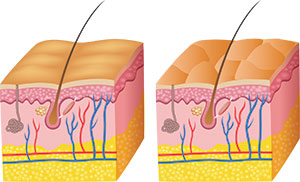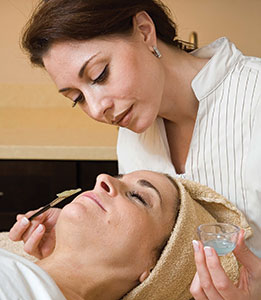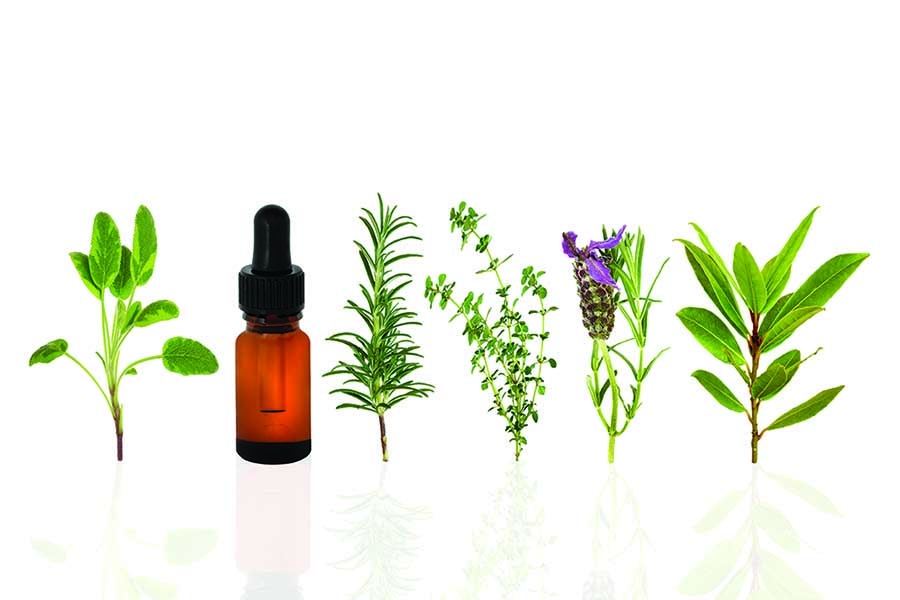10 Things about DIY Skin Care
Written by Rachael Pontillo, L.E., M.Msc, CIHC, CNAPDIY skin care is a hot topic among skin care professionals and consumers. But it begs the question: if the ingredients are easily accessible and the products can be made by anyone, can it be considered professional? Additionally, there is debate about whether the application of whole foods and whole plant preparations are as effective as more high-tech ingredients like peptides, ceramides, and other actives. Despite these discussions, DIY skin care is more common than it has ever been, and the trendiness of bringing back older traditions and rituals is largely responsible for that resurgence. Also responsible is the increased consumer concern about how certain ingredients in synthetic skin care products affect overall health. Whether professionals are for or against DIY skin care in the spa or as part of clients’ homecare regimens, it is important for them to learn more about it so they can gauge its risks and benefits for themselves and educate clients accordingly.
1. Whole foods and plants can benefit the skin. In their whole form, plants (including fruits, vegetables, herbs, flowers, and spices) contain a multitude of skin-healthy vitamins, minerals, essential fatty acids, and antioxidants; some also contain naturally occurring enzymes and alpha or beta hydroxy acids. While it can be argued that these compounds are not as concentrated as an active synthesized in a laboratory and packed into a delivery system, the fact is that the bioavailability of whole foods on the skin is higher than one might think. The reason for this is because the plants also contain all the necessary co-enzymes and co-factors that the “main” components actually need to be absorbed and utilized by the skin; whereas, actives, isolates, and certain extracts do not.
2. Fresh ingredients are nutrient dense. A fruit eaten just after it has been picked off a tree is more nutritious than one that has been stored for weeks before being purchased and consumed. Whole foods pack higher quality nutrients than processed and packaged food-like substances. The same applies to skin care ingredients.

3. There are other forms of DIY skin care than kitchen DIY. While many aestheticians may believe that DIY skin care is mashing up ingredients in a bowl from one’s refrigerator or pantry and applying it as a mask, that is only one aspect. Herbal, independent, boutique skin care has emerged strongly over the past several years and has gained strong influence very quickly. These products are handcrafted in small batches or on a custom basis, using all natural ingredients such as fixed oils, essential oils, herb-infused oils, hydrosols and flower waters, herbal infusions and extracts, natural waxes, and butters. They are either made anhydrously or are preserved naturally, with the understanding that they are not meant to sit on a shelf, but to be used within a few months. The customer then needs to return for more.
4. A properly formulated DIY skin care product can be just as, or more, concentrated as professional products. The number one ingredient in the majority of professional skin care products is water, which means that water makes up to 80 percent of that product. Many DIY skin care products contain no water at all, either to avoid the need for preservatives or to keep pH levels low. Instead, humectants like aloe vera gel or bioferments, hydrosols or flower waters, or herbal infusions are used. These ingredients possess therapeutic benefits of their own beyond hydration and functional benefits.
5. There is a big misconception that DIY skin care puts people more at risk of developing allergies than synthetic skin care. The truth is that allergies of all kinds are on the rise in the general population. According to WebMD, the most common skin allergens are preservatives such as parabens, imidazolidinyl urea, Quaternium-15, DMDM hydantoin, phenoxyethanol, methylchloroisothiazolinone, and formaldehyde. Synthetic fragrances and perfumes are also known as one of the most common causes of skin and respiratory allergic and irritant reactions.1 There is no greater risk of allergy with DIY skin care products than there is with synthetic or professional products.
6. Not all DIY skin care is safe. Many of the DIY skin care recipes and advice found online can cause more harm than good. Certain examples include using natural acids, like lemon juice and apple cider vinegar, at full strength, topically and using crushed up aspirin or other supplements as spot treatments for hyperpigmentation or acne. Other common DIY skin care ingredients where the risks outweigh any potential benefit include, but are not limited to, sugar, salt, coffee grounds, or nut shells as exfoliants; baking soda; hydrogen peroxide; and raw eggs.
7. DIY skin care that contains fresh food, plant matter, or water must be preserved to be safe. It is safe to make products containing these ingredients and store it, covered, in a refrigerator to be used within three days, but any desired shelf life beyond that warrants the addition of a preservative. Unpreserved DIY skin care products (unless they are 100 percent anhydrous) will quickly incur microbial growth. Bacteria, mold, and yeast are not always able to be detected visually, by odor, or through a change in consistency, so users may not know their product has become contaminated. The risks of using contaminated DIY skin care include dermatitis, bacterial or fungal infection, conjunctivitis or blepharitis, and even loss of vision.
8. Natural preservation is not a simple topic. Many beginner DIY skin care enthusiasts believe they can purchase a natural antimicrobial compound from an online supplier and add the directed percentage to their formula. They believe that this is enough to give the product a long shelf life and stability. This is not the case. The type of preservative a product requires depends on multiple variables, such as ingredients, the environment in which it was prepared, type of equipment and packaging used, and pH. Often times, a preservative that looks like it initially works winds up failing during microbial or pH testing and reformulation is required. Further, though the green chemistry industry is quickly developing new solutions for natural preservation, there are still many formulations that, at this time, are not possible to be 100 percent naturally preserved.
9. Even anhydrous products can become contaminated. While aestheticians are trained to never remove product from a jar or bottle with fingers or double dip spatulas and applicators, clients may not be as vigilant. Further, anhydrous products, if exposed to moisture, can become contaminated. For example, this might happen to a DIY body butter and sugar scrub being used in a steamy bathroom. For these reasons, many DIY skin care formulators now choose to add oil-soluble antimicrobials to their products for added protection.
 10. The most common natural preservatives found in online DIY skin care recipes are not actually preservatives. Most recipes found online recommend using vitamin E, rosemary oleoresin, and grapefruit seed extract as preservatives. Even certain natural skin care companies use these and claim they are functioning as preservatives. The fact is that they are antioxidants, meaning they inhibit oxidation and prevent rancidity of the oils in a product, but they do not inhibit the growth of gram positive or gram negative bacteria, mold, or yeast. Thus, they cannot be considered adequate preservatives.
10. The most common natural preservatives found in online DIY skin care recipes are not actually preservatives. Most recipes found online recommend using vitamin E, rosemary oleoresin, and grapefruit seed extract as preservatives. Even certain natural skin care companies use these and claim they are functioning as preservatives. The fact is that they are antioxidants, meaning they inhibit oxidation and prevent rancidity of the oils in a product, but they do not inhibit the growth of gram positive or gram negative bacteria, mold, or yeast. Thus, they cannot be considered adequate preservatives.
DIY skin care comes with certain risks. But like anything else in the spa, once professionals educate themselves and their clients, the risks diminish and the benefits appear. If professionals choose to utilize DIY skin care treatments in their spa, they can create custom formulations for their clients, or recommend DIY skin care preparations to their clients as part of their homecare. It is important to do some research. DIY skin care can be a wonderful and empowering opportunity, both for the professionals and their clients. When looking for the next continuing education opportunity, consider DIY skin care formulation. Look for a high-quality course taught by someone who understands the ingredients and formulation, but also who has a deep understanding of the skin and the needs of aestheticians.
Reference
1 Skin Reactions to Beauty Products. (2016). Retrieved from
http://www.webmd.com/allergies/cosmetics
Rachael Pontillo is the bestselling author of “Love Your Skin, Love Yourself,” and co-author of the cookbook, “The Sauce Code.” She is an award-winning, AADP board certified, holistic health and image coach, certified metaphysical practitioner, licensed aesthetician, natural skin care formulator, and educator. She is the creator of the popular blog and lifestyle site, www.holisticallyhaute.com, and the six-week online course, Create Your Skincare™. Pontillo is a recipient of the Institute for Integration®’s esteemed Health Leadership Award and is also a brand ambassador and spokesperson for NeoCell™. Pontillo is currently working towards a Ph.D. in holistic life counseling.
